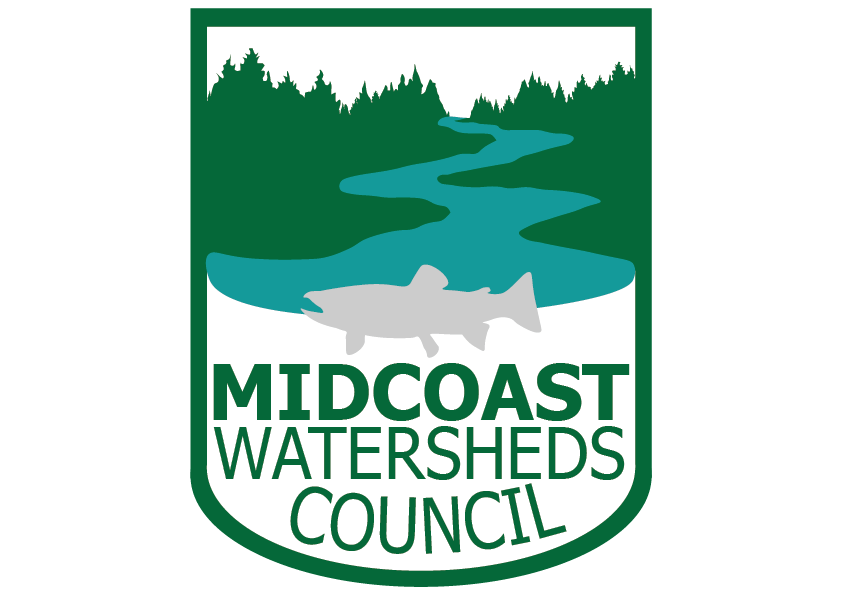2024 Overview
Starr Creek
The first restoration project under the FIP occurred in summer 2024, at The Wetland Conservancy’s Starr Creek Preserve, located along Alsea Bay. Starr Creek was once tide-gated and altered for agriculture, cutting it off from natural tidal flow and degrading habitat. Since acquiring the property in 2008, The Wetlands Conservancy has been working to restore its natural complexity with the help of restoration partners like MidCoast Watersheds Council.
Evan Hayduk, Executive Director of MCWC, guides logs places into Starr Creek.
Estuaries like Starr Creek play a critical role in the salmon lifecycle, providing young fish with rich foraging opportunities and protective cover before they enter the ocean. Restoration efforts included removing invasive plants, placing large wood structures to create rearing habitat, and planting native vegetation to rebuild tidal marsh, scrub-shrub, and spruce swamp ecosystems.
More than 90% of Oregon’s forested tidal swamps have been lost, but projects like this are bringing them back—providing benefits not only for fish and wildlife but also for climate resilience and water quality.
Mill and Beaty Creeks
For decades, Mill Creek, a tributary of the Alsea River, bore the marks of its past—a former lumber mill site, simplified and degraded stream channels, invasive species, and artificial ponds that disrupted the natural flow of water. Native salmon, once abundant in these waters, struggled to find suitable habitat. In 2007 that started to change, when Janet Landauer purchased her 20+ acre property along the creek, she saw not just a piece of land, but an opportunity for renewal.
Mill Creek after the 2024 habitat restoration project.
Janet dreamed of restoring Mill Creek to its natural state, ensuring that salmon could return to the cold waters that had once sustained them. This past summer, that dream became a reality. In partnership with restoration specialists, neighbors, conservation organizations, and local agencies, MidCoast Watersheds Council worked to remove the remnants of past land use—removing berms, regrading former mill pond areas, replacing fish passage barriers, and reconnecting the creek to its historic floodplain. Over 300 large logs were placed in structures throughout the watershed, jumpstarting the process to create the complexity needed for fish to thrive.
Now Janet has watched in awe as salmon return to spawn. The creek, once constrained by human intervention, is healing—flowing freely, shaping new channels, and providing habitat for fish and wildlife.
“Humans have so devastated the environment. If I could do just one little thing to make it better, I was happy to do it. It’s been a wonderful experience,” Janet shares.
Her story is one of resilience, and relies on the power of local partnerships with a common goal, – welcoming salmon back. Want to see how Mill Creek is doing today? Click below to watch the film documenting this incredible transformation.



